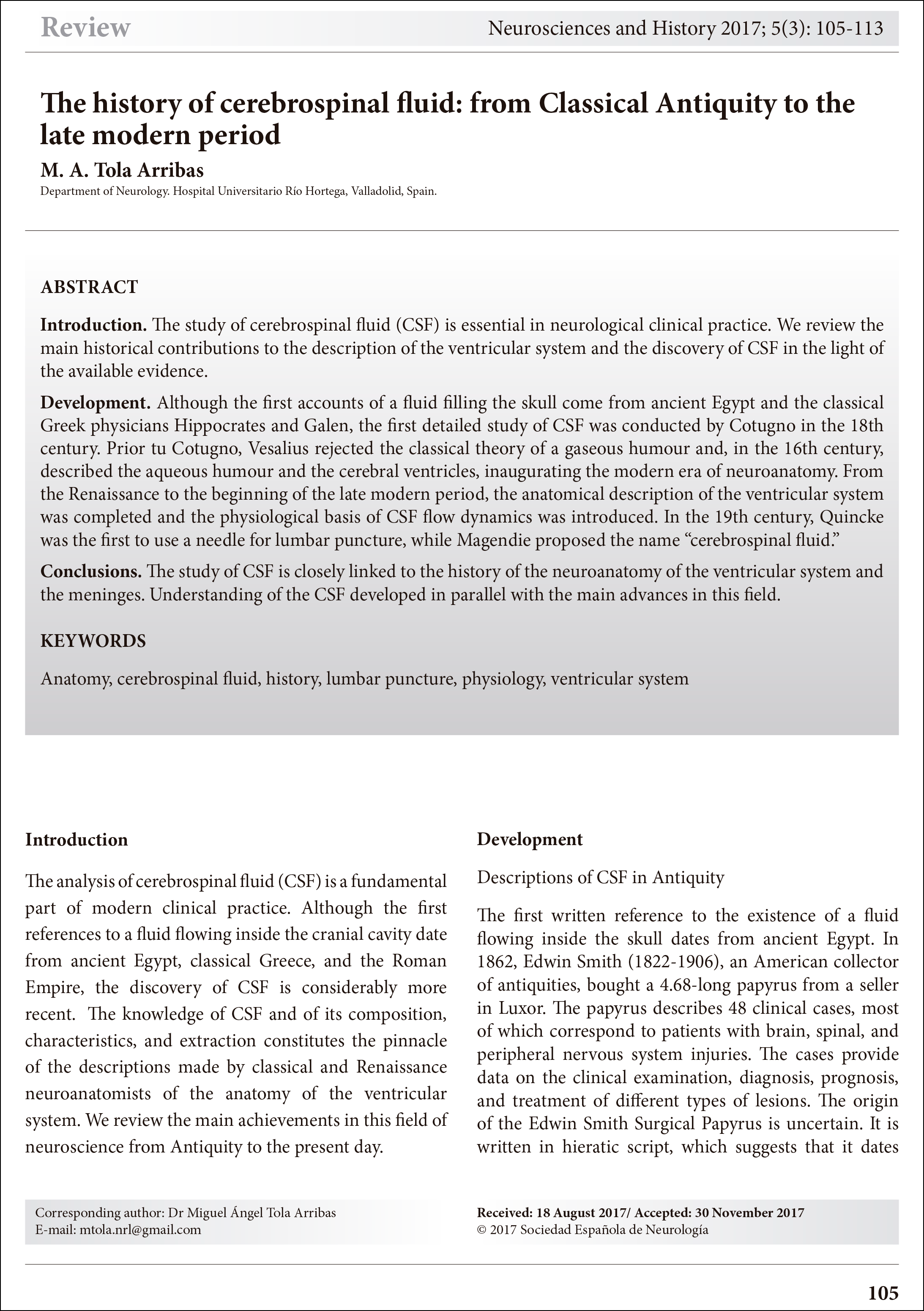The history of cerebrospinal fluid: from Classical Antiquity to the late modern period

M. A. Tola Arribas
Neurosciences and History 2017; 5(3): 105-113
Neurosciences and History 2017; 5(3): 105-113
Type of article: REVIEW
AUTHOR
M. A. Tola Arribas
Department of Neurology. Hospital Universitario Río Hortega, Valladolid, Spain.
ABSTRACT
Introduction. The study of cerebrospinal fluid (CSF) is essential in neurological clinical practice. We review the main historical contributions to the description of the ventricular system and the discovery of CSF in the light of the available evidence.Development. Although the first accounts of a fluid filling the skull come from ancient Egypt and the classical Greek physicians Hippocrates and Galen, the first detailed study of CSF was conducted by Cotugno in the 18th century. Prior tu Cotugno, Vesalius rejected the classical theory of a gaseous humour and, in the 16th century, described the aqueous humour and the cerebral ventricles, inaugurating the modern era of neuroanatomy. From the Renaissance to the beginning of the late modern period, the anatomical description of the ventricular system was completed and the physiological basis of CSF flow dynamics was introduced. In the 19th century, Quincke was the first to use a needle for lumbar puncture, while Magendie proposed the name “cerebrospinal fluid.”
Conclusions. The study of CSF is closely linked to the history of the neuroanatomy of the ventricular system and the meninges. Understanding of the CSF developed in parallel with the main advances in this field.
KEYWORDS
Anatomy, cerebrospinal fluid, history, lumbar puncture, physiology, ventricular system
Neurosciences and History 2017; 5(3): 105-113
Editorial Secretary
Neurosciences and History
Archivo Histórico de la Sociedad Española de Neurología
C/ Casp, 172, 1A 08013 – Barcelona
Tlf.: +34 933426233.
E-mail: archivo@sen.org.es





